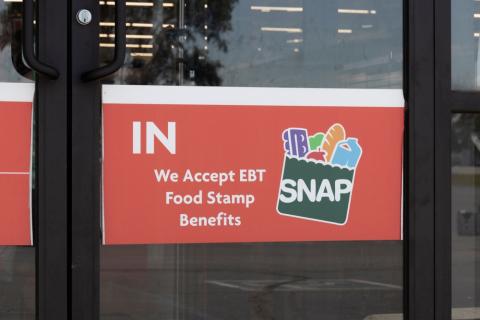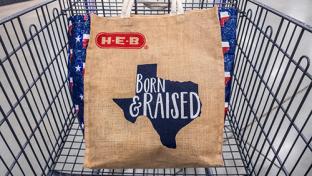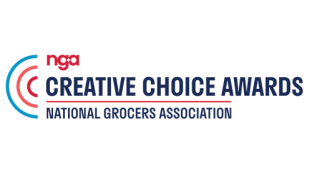Save A Lot, Food 4 Less, Dollar General Top Retailers for SNAP Customers

Save A Lot, Food 4 Less and Dollar General are the top three grocery retailers for Supplemental Nutrition Assistance Program (SNAP) customers, with WinCo and Grocery Outlet completing the top five, according to a special report from customer data science provider dunnhumby. “The SNAP Rollercoaster: A dunnhumby Special Report on Hunger,” examines which U.S. grocery retailers are best positioned to win the loyalty of current and potential SNAP recipients and how retailers can limit grocery sales losses due to recently enacted SNAP reductions, and identified the next five retailers in the top 10 as Price Rite, Walmart, ALDI, Marc’s and H-E-B.
According to dunnhumby’s analysis of data provided by Edge by Ascential and the Center on Budget and Policy Priorities, U.S. grocery revenues will decline by $20 billion from their 2022 levels.
“SNAP recipients began a roller coaster ride in April 2020 with the arrival of higher SNAP benefits due to the pandemic that initially left them with larger food budgets to feed their households,” noted Matt O’Grady, president of the Americas at Chicago-based dunnhumby. “For many, this meant they could purchase healthier foods. But although benefits were increased again in 2021 under the COVID Relief bill, consumers were also hit with record inflation eating into all areas of their household budgets. This year, they are again left in a precarious position, with a deep reduction in their SNAP benefits resulting in much less disposable income available to take care of their household food needs. Retailers need to understand that one out of every eight grocery shoppers in 2023 [is] walking into their stores stressed, emotionally drained and looking for retailers to be part of the solution. At one point or another, 20% of Americans have been on food stamps. Retailers that can be part of the solution by providing customers with strategies and tactics that meet their needs better than the competition will be building loyalty with a group of customers that over time will represent a sizable portion of the grocery market.”
Key findings and recommendations from the study include the following:
- Ninety-two percent of SNAP customers are at or below the poverty line and are likely to be caregivers, working or both: 65% have families with children, 36% are in families with older adults who are disabled, and 41% are working. Cashiers and foodservice workers are twice as likely as the general population to receive SNAP benefits.
- Lower-income consumers rely just as much as the grocery store as shoppers from higher income groups. They shop for some of the most common categories – meat, packaged food, dairy – at similar rates to higher-income groups. They’re less likely to buy fresh produce but more likely to buy frozen produce versus higher income groups. Lower-income consumers consider saving money (63%) their most important need. In baby care, ready-to-eat foods, deli, fresh produce and meat, lower-income consumers rank savings higher than quality.
- Rethink how to define a “loyal” customer. SNAP and lower-income shoppers visit fewer grocery banners on average than higher-income shoppers – 3.6 stores versus 4.5 in an average month – and they give a greater share of their grocery budget to any one retailer. They are therefore more likely to be loyal to a retailer than higher-income shoppers with bigger grocery budgets. Retailers should look at SNAP and food-insecure customers as a segment to target with marketing that appeals to them. Once the loyalty of these shoppers is earned, retailers will be more likely to keep them.
- Create appropriate ways of targeting these shoppers with relevant offers. The USDA aims to protect SNAP participants’ privacy by discouraging the EBT payment type flag as an identifier for marketing purposes. However, retailers can serve SNAP and food-insecure customers by more thinly slicing their price-sensitivity segmentations. For example, grocers can take their most price-sensitive tier and divide that into three levels. The ultra-price-sensitive subsegment would more likely be food insecure.
- Value-tier private brand and targeted communications. A value-tier private brand, as well as being a long-term defense against a discounter such as ALDI, should deliver on the basic needs of a product while matching whatever retailer has the lowest prices in the market. Retailers should aim communications at ultra-price-sensitive customers, highlighting the retailers’ value-tier private brand.
- Launch mass promotions, including extra-deep price locks/price freezes, for ultra-price-sensitive customers. Inflation is still a top concern for shoppers, and many retailers are still advertising summer price freezes to help customers beat inflation. Consider a second, deeper tier for ultra-price-sensitive customers – instead of locking/freezing prices, lower them and keep them there throughout the promotion.
- Make health-and-wellness products more accessible. If SNAP customers are more likely to eschew medical care and to be unable to afford enough nutrient-dense food, retailers should consider ways to make over-the-counter medicine and vitamins/supplements more accessible to ultra-price-sensitive customers.
The overall rankings in the report came from a consumer survey-informed statistical model that predicts how retailers deliver on the customer needs that are most important for driving performance and emotional bonds with shoppers. As part of the report, dunnhumby used data from governmental agencies for its analysis, along with the company’s Retailer Preference Index (RPI) database, which contains 70,000 grocery consumer interviews conducted from 2017 through 2022. Sixty-nine of the largest U.S. grocery retailers in conventional, mass, club, specialty, discounter, drug and dollar channels were included in the RPI.
Save A Lot has 842 stores in 32 states. The St. Ann, Mo.-based company is No. 57 on The PG 100, Progressive Grocer’s 2023 list of the top food and consumables retailers in North America. Compton, Calif.-based Food 4 Less is a banner of The Kroger Co., a Cincinnati-based grocer that’s No. 4 on PG’s list, while Walmart U.S., H-E-B, Dollar General, ALDI USA, Price Rite (owned by Wakefern Food Corp.), WinCo, Grocery Outlet and Marc’s are Nos. 1, 15, 16, 26, 29, 42, 66 and 80, respectively.







